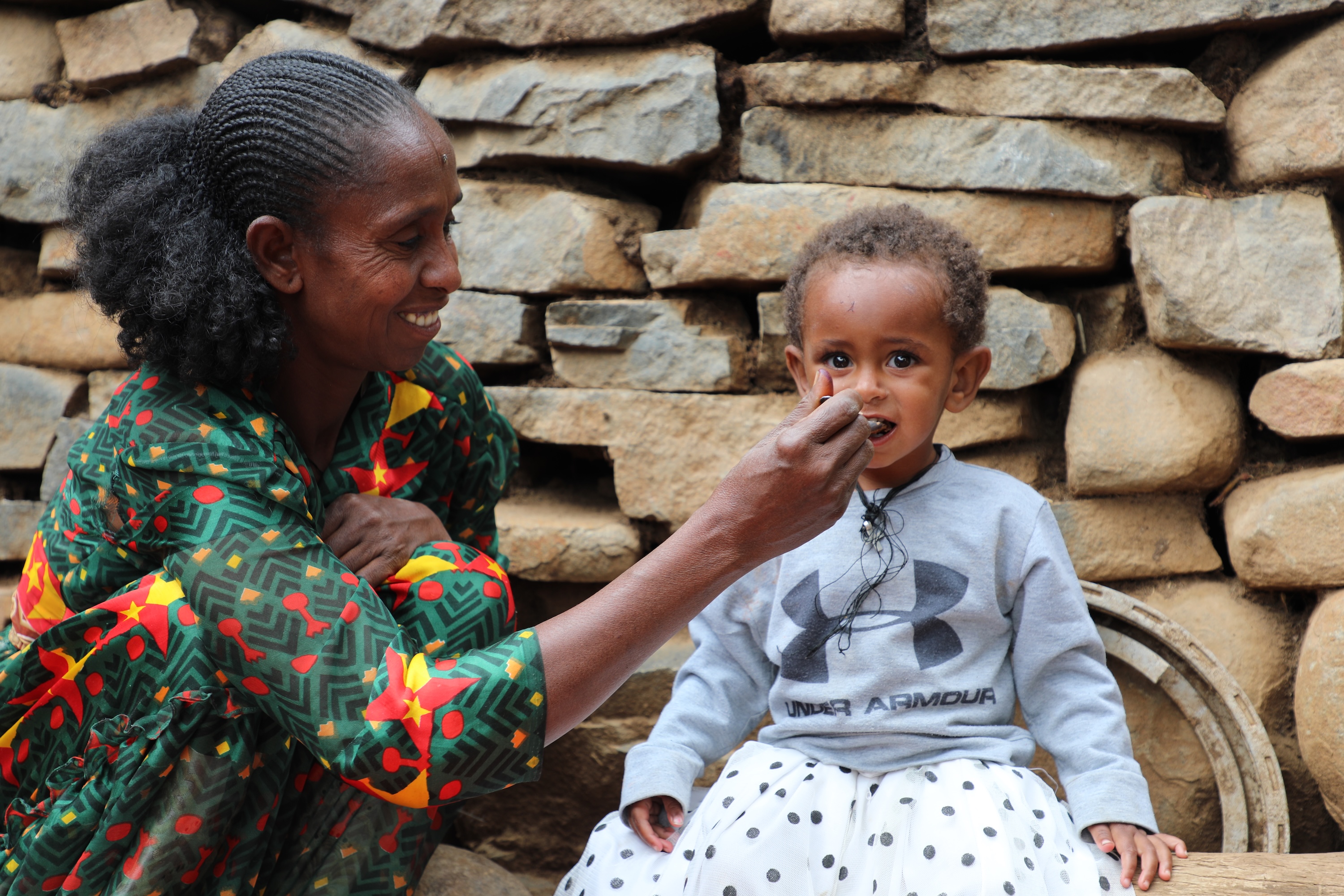The Brave Mother Who Refused to Give Up When Hunger Threatened Her Child
The impacts of conflict have continued to echo in the Tigray Region, where a silent war is fought every day against an unseen enemy - malnutrition. The story of 40-year-old Kendehaftey, a mother of seven, sheds light on the tremendous struggles and victories that countless families encounter following the humanitarian crises since the escalation of conflict in northern Ethiopia in 2020.
Her hometown, Gijjet in Saharti District, 60 km south of the region’s capital, Mekelle, turned destitute, testing her endurance. “We lost everything,” she recalls, her voice trembling with pain. “Our oxen, our household belongings, everything was gone.” Her husband, Hailu, traumatised by the violence, disappeared without a trace. “I don’t know where he is. We haven’t seen him since.”
But the conflict didn’t just leave physical scars. Her children, especially the youngest, two-year-old Arsema, suffered deeply. “There were days I could only feed them once,” she says, tears filling her eyes. “Some nights, we would all go to bed hungry. It felt like I was losing them slowly, especially Arsema.”
A Child on the Brink
Born in the shadow of conflict, Arsema entered the world already weakened by her mother’s own battle with malnutrition during pregnancy. Battling with dual nutritional deficiencies, Arsema's fragile existence was a constant source of worry for Kendehaftey. "She was so weak, and even sometimes I was worried and doubted if she could survive," she recalls, as her anxiety is still vivid.
After months of desperate struggle, Arsema's deteriorating condition left Kendehaftey with no choice but to seek help at a nearby health centre. There, the girl was diagnosed with Severe Acute Malnutrition (SAM) and enrolled in an Outpatient Therapeutic Programme (OTP). Arsema started to get better with consistent therapeutic feeding and medical care, and Kendehaftey’s heart began to fill with hope, but only short-lived.
After completing the initial treatment and being discharged from the programme, Arsema relapsed. The food scarcity that had driven her to the brink of death returned like a haunting shadow. “She became weak again,” says Kendehaftey. “Though she was approaching her 1st birthday, my child did not play like other children do. She was silent all the time," her mother recounts, the pain of seeing her child suffer again still fresh in her eyes.
Arsema was re-admitted to the OTP and stayed for three months, from December 2024 to February 2025, receiving treatment, and once again, she recovered. Yet, the underlying problem remained untouched, for there wasn’t enough food at home to sustain her recovery.
 A Lifeline of Hope
A Lifeline of Hope
According to UNICEF data, 28% of deaths in children under five are linked to undernutrition in Ethiopia. Over 5.4 million children under five are stunted, and nearly two million are acutely malnourished. The readmission rate for malnutrition due to relapse to illness-condition ranges alarmingly from 2.6% to 37.5%.
To avert this challenge, World Vision Ethiopia, together with Catholic Relief Services, implemented the Joint Emergency Operation Programme (JEOP), funded by the U.S. Government, to create a linkage between nutrition and food assistance as well as to break the cycle of malnutrition relapse by ensuring food security for vulnerable households.
 A Mother’s Gratitude
A Mother’s Gratitude
Since April 2025, Kendehaftey's household, comprising eight members, has been receiving 120 kg of wheat, 3.6 litres of vegetable oil, and 12 kg of peas every month. "This helps me feed Arsema and her siblings properly," Kendehaftey explains with gratitude.
“This support changed everything,” she says. “Now, Arsema is strong. She eats well; she especially loves the porridge I make from the wheat. She plays, laughs, and much more.”
With joy returning to her home, Kendehaftey now sees a future for her children. “This food saved my daughter,” she says. “It gave me the strength to protect all my children.”
Real Impact, Measurable Results
“There were only two relapse cases reported during the implementation period,” says Beletew Shewabre, JEOP Nutrition Coordinator with World Vision Ethiopia.
Incredibly, World Vision Ethiopia reached around 22,000 children under five being discharged from Outpatient and Targeted Supplementary Feeding Programmes through linking them to food or cash assistance by March 2025. The programme also positively impacted the lives of over 122,000 people, underscoring the immense role of linking nutrition and food assistance programmes can significantly reduce relapse rates.
In a world where conflict, climate change, and economic instability constantly threaten the well-being of families, the fight against child malnutrition is relentless and filled with obstacles. Yet, even in the midst of these formidable challenges, there is hope. Through the dedication of organisations and the resilience of mothers like Kendehaftey, children who were once on the edge of despair are now given a chance to thrive. The journey is far from easy, but every small victory brings renewed strength and optimism for a brighter future.
By Daniel Kefela, Humanitarian Policy and Advocacy Advisor, World Vision International